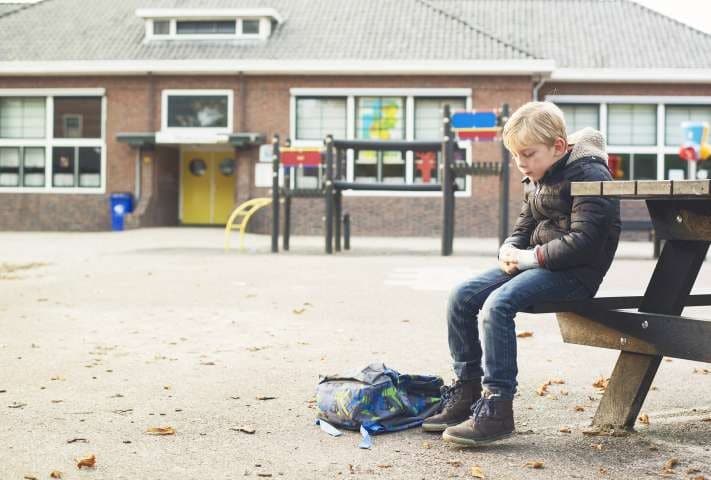The Difference Between Social Awkwardness and Autism
Written by: Mariela Tapia Hernandez, M.Ed., RBT
Reviewed by: Melanie Bren, BCBA, LBA

In today’s society, communication is the driving force for human relationships and opportunities. Unfortunately, having good social skills is not something that occurs effortlessly for everyone—many teens struggle with social interactions at school or in the community, which can make it difficult for them to build friendships and communicate their needs and wants with others. Some teens may also face extreme challenges with socialization that can lead to lower self-esteem and depression.
Sometimes it can be challenging as a parent to understand what produces problems with social behavior. In some cases, teens may never get the correct diagnosis because autism can easily be misinterpreted as social awkwardness. Learning about the symptoms of autism can help identify if someone in your family may be struggling and in need of further examination. It is necessary to recognize that only a qualified medical professional can diagnose autism, also known as autism spectrum disorder.
Autism Spectrum disorder (ASD) is a developmental disorder that begins in early childhood. Autism can be diagnosed as early as 18 months.
It affects social skills, communication, and learning abilities. While no person with autism is the same, each individual has unique strengths, interests, and learning abilities. Some children will require a lot of assistance in their daily lives, while others can live an independent life with little to no help.
What is Social Awkwardness?
Although social awkwardness is not a neurotypical disorder, it can still cause an abundance of distress and difficulty for the individuals who experience it. It is a pattern of feelings individuals struggle with within their daily lives, making most social interactions challenging. Someone socially awkward has a difficult time communicating with others. They may fail to understand social norms, notice others’ body language and gestural cues.
They might do things that are considered inappropriate (e.g., being hyper focused on one point). Also, they avoid social activities (e.g., parties, sports, events). They can feel self-conscious and hesitant to speak to others and can experience fear of embarrassment. Being socially awkward can also lead to being bullied and rejected by others.
The difference between social awkwardness and autism tend to overlap because both have similar characteristics. Some people with autism might avoid eye contact, have difficulty with inflation of their voice, and even have trouble understanding sarcasm and jokes. They can also be considered “socially awkward” by others when they act in ways that are not deemed appropriate in social norms.
Social Anxiety and Autism
Social anxiety and autism also share similar characteristics that can make it difficult to tell them apart. Both cause social interactions to be rather challenging. However, you can learn to tell the difference by analyzing particular attributes in each.
Fear is the leading factor in social anxiety. It is an unrealistic fear that others are judging you or fear that others will reject you. It will stop people from doing things in their everyday lives that are simple for others.
A single task such as going to school, using a public bathroom, or daily events can become unmanageable. It causes individuals with social anxiety too frequently worry that they will embarrass themselves in any social situation. Social anxiety can begin to develop around 13 and is sometimes be linked to a “history of abuse, bullying, or over-controlling parents.”
People with social anxiety not only have intrusive thoughts; they can also show signs of physical symptoms. The following symptoms may vary per individual.
- Increased heart rate
- Sweating
- Shaking
- Nausea or stomach issues
- Muscle Tension
- Mind goes blank
- Blushing
With autism, social skills are impaired because of communication; the individual does not know the right things to say. It causes challenges with interpreting social cues, facial expressions, and tone of voice. They might not understand personal space and stand too close or talk too loud. These traits differ from someone with social anxiety.
An individual with social anxiety is overly sensitive to others’ body language and facial expressions. They might stand farther away from others and talk in a softer voice to avoid drawing attention to themselves.
Both diagnoses can cause teens to spend most of their time isolating themselves from any social engagements and have challenges making friends or expressing their wishes and needs in school.
Can someone with autism have social anxiety?
Autism and social anxiety can coexist. Individuals with autism are at greater risk for developing social anxiety over time due to consistent bullying or teasing from peers in school over an extended period. It is not easy for teens with autism to make friends. They typically spend most of their time alone and avoid talking in social situations because of bullying.
Anxiety can also worsen autism symptoms by causing other behavior challenges. Lower functioning children with autism can demonstrate issues with social anxiety through elopement, tantrums, and avoidance behavior. While in higher functioning, teens with good verbal language can express their internal feelings. Their behavior can be seen through resistance to attend school, vocal protest, and being easily overwhelmed by school-related demands.
Treatment
Social anxiety is typically treated through cognitive behavioral therapy (CBT), which helps identify and change destructive thought patterns that influence behavior. It can help individuals without autism learn the skills required to manage their situation better. Therapy can also help build a healthier habit to deal with anxiety.
Medication is also commonly prescribed by a doctor, and they may suggest antidepressants to help which symptoms. Treatment is always individualized for each patient. What helps one person may not help others. So it is always essential to consult with a clinical professional.
No treatment cures autism, but the most effective approach to help is Applied Behavior Analysis (ABA). It can develop social skills and communication through positive reinforcement. ABA therapy can work on improving social skills by working on:
- Initiating and maintaining a conversation
- Reciprocation greetings with peers
- Taking turns during games
- Requesting items from others
- Initiation play
- Personal space
Through guided practice and reinforcement, ABA helps work on complex social skills. Skills vary and are individual to the client’s specific needs.
Date Posted:
November 1, 2021
Share this blog
Categories
Recent Blog Posts








